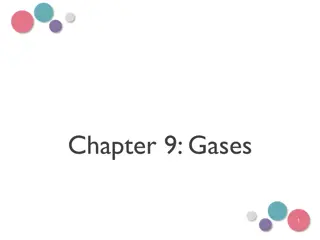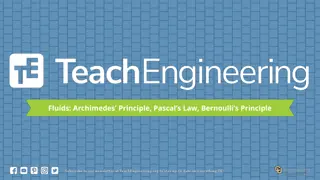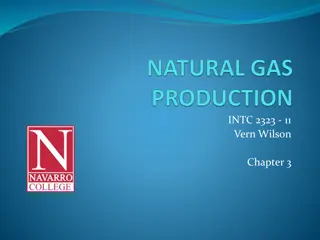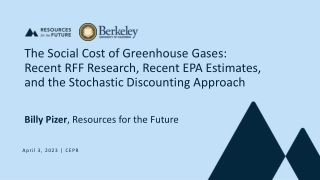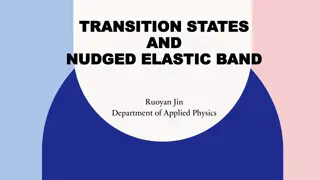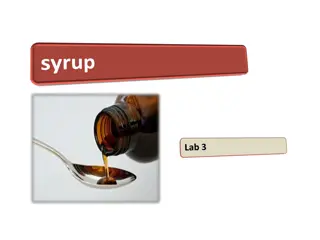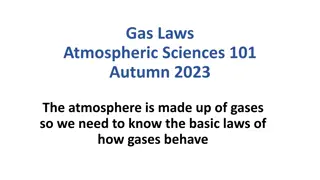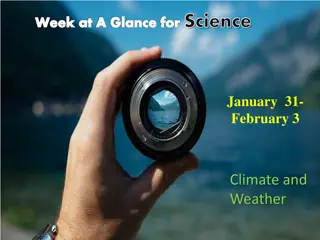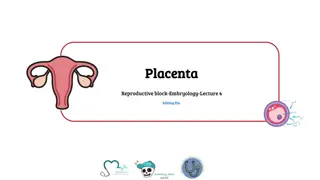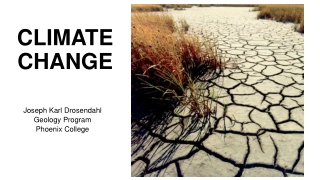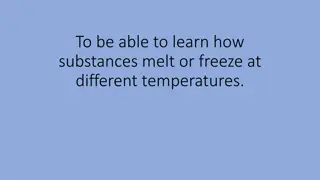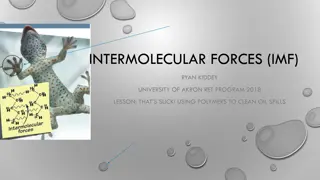Understanding the States of Matter: Solids, Liquids, and Gases
Matter is anything that occupies space and has mass, consisting of tiny particles like atoms and molecules. Solids have closely packed particles, liquids have less densely packed particles that can flow, and gases have spread out particles. Solids retain their shape, liquids take the shape of their container, and gases fill the available space. Examples and characteristics of each state are explored, highlighting the properties of solids, liquids, and gases.
Download Presentation
Please find below an Image/Link to download the presentation.
The content on the website is provided AS IS for your information and personal use only. It may not be sold, licensed, or shared on other websites without obtaining consent from the author. Download presentation by click this link. If you encounter any issues during the download, it is possible that the publisher has removed the file from their server.
Presentation Transcript
LO6: What are things made of? States of Matter States of Matter 6.6.1 I can investigate and compare the properties of different states of matter.
Think - Pair - Share What is matter?
Today we are going to learn: that a material can be a solid, a liquid or a gas.
What is Matter? Matter is anything that occupies space and has mass. It is made up of tiny particles. These can be atoms or groups of atoms called molecules. Solid Liquid Gas In most liquids, the particles are less densely packed. The particles in most solids are closely packed together. The atoms and molecules in gases are much more spread out than in solids or liquids.
Solid Liquid Gas The particles in most solids are closely packed together. In most liquids, the particles are less densely packed. The atoms and molecules in gases are much more spread out than in solids or liquids.
Solids Solids A solid is something that we can hold on to. A solid keeps its shape, unless we cut it or shape it ourselves. In a solid, all of the particles are packed together very tightly. Some examples of solids are: ice, wood and metal.
Liquids Liquids Liquids are runny. They can be poured. The particles are less tightly packed, so they can move about. If poured from one container to another, they will take the shape of their new container. Some examples of liquids are: water, syrup and milk.
Gases Gases The particles in gases have lots of room to move. Gases are all around us. Some examples of gases are: oxygen, smoke and steam. They spread into all of the empty places they can. Most are invisible.
Today we learnt: Today we learnt: 1) 2) Particles are arranged in a tight regular pattern and vibrate on spot. 3) A liquid It takes the shape of its container. Particles are quite close, but not in a neat even arrangement. The three states of matter mentioned are: solid, liquid and gas A solid solid has a definite shape. liquid does not have a definite shape.
Today we learnt: Today we learnt: 4) A gas It sometimes takes the shape of its container and sometimes flies freely around. The particles are not connected to each other and takes up whatever space is available. gas does not have a definite shape.



